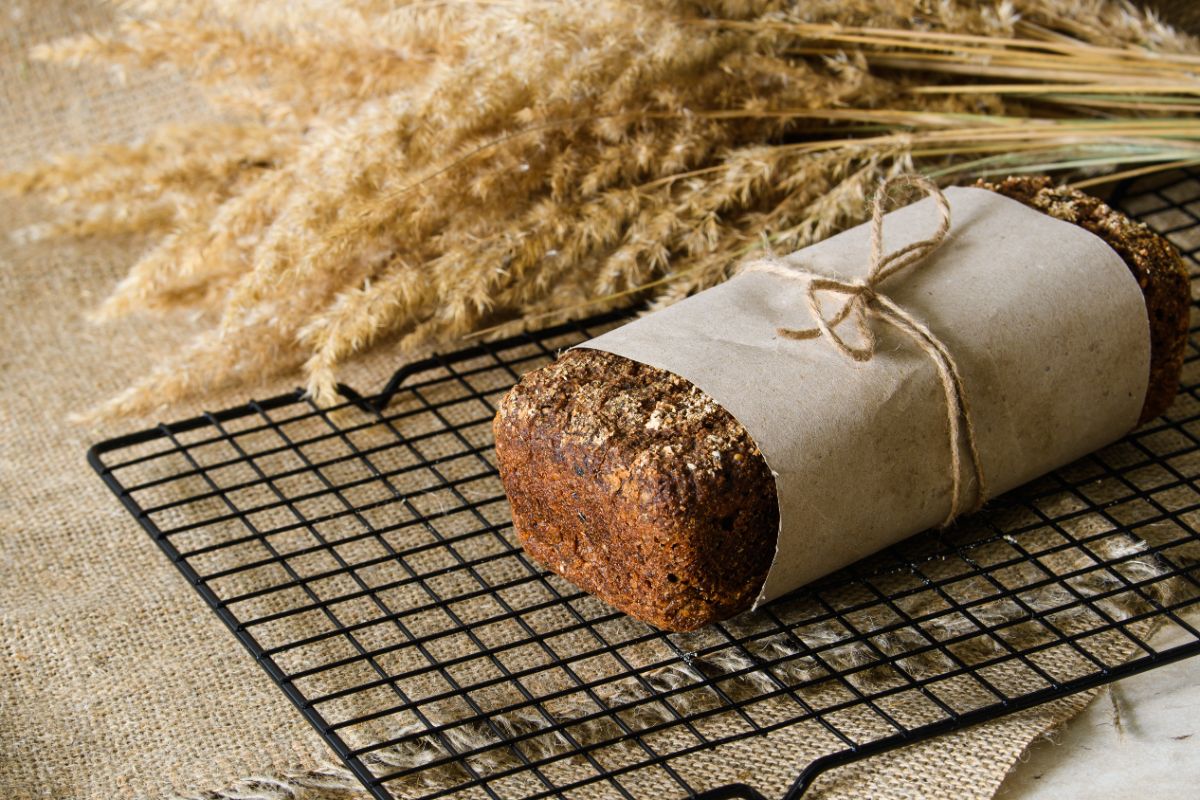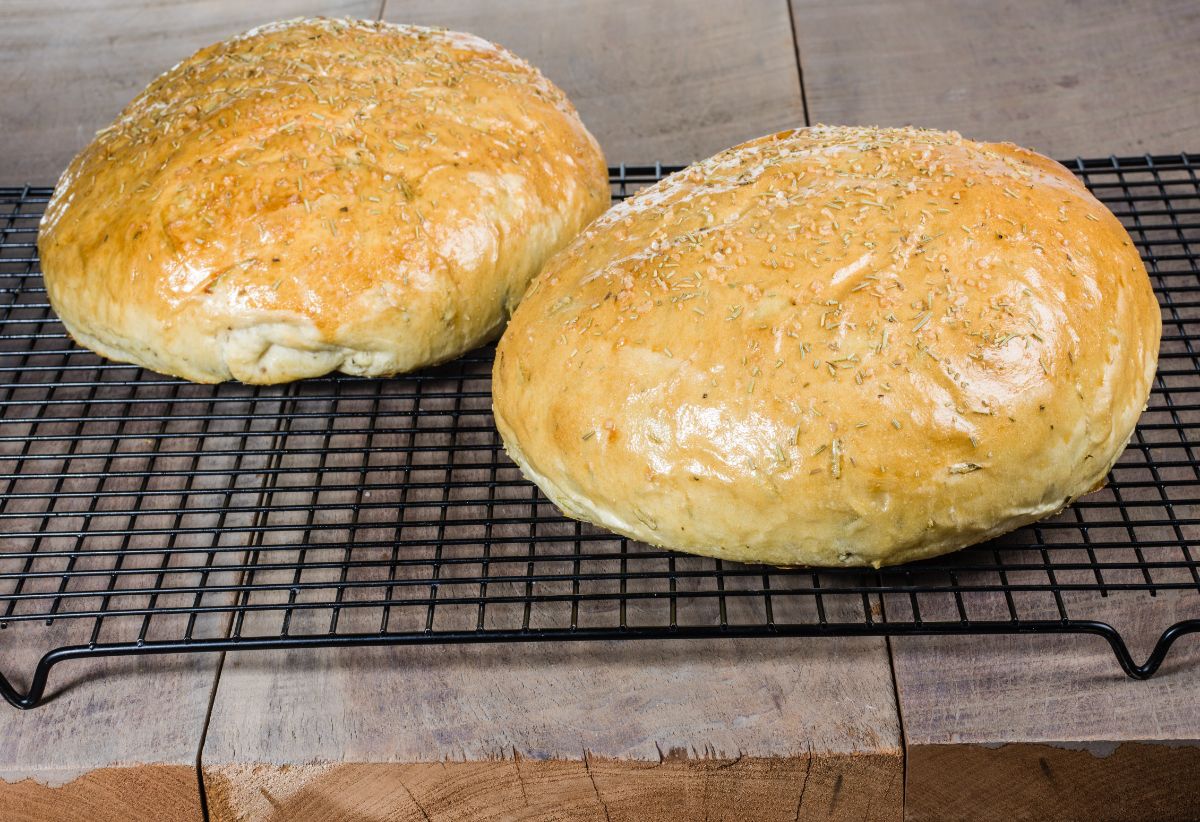After you’ve baked the bread, it needs to cool down to room temperature. The standard method is to use a cooling rack.
But are cooling racks necessary? And what happens if you cool the bread another way? To cool down bread properly and to get the ideal consistency, then yes, the cooling racks are necessary.

What Happens If You Cool Bread in the Bread Maker?
The worst thing you can do is leave the bread in the bread maker to cool while leaving the lid on. The bread will get soggy because the steam can’t escape into the atmosphere.
However, the bread maker should cool down relatively quickly, so you’re at least not likely to burn the bread letting it cool this way. Know that taking it out and letting it cool on the cooling rack is necessary to get the ideal texture.
You can then store the bread in the bread maker at a “warm” temperature while covered to keep it at an ideal state before you eat it. However, the bread maker pan should be impeccably clean when you do this or you’ll foster mold and bacterial growth.
Can Bread Cool in the Bread Maker If It Is In a Keep Warm Cycle?
Suppose you baked a loaf of bread in the bread maker. Since you didn’t remove it in time, it is now going through a keep warm cycle, turning on and off the heating element.
This process won’t let the bread cool down properly. Nor will it allow the excess humidity in the bread maker to escape.
This is a short-term solution to let you get the bread out and cool it properly, though the longer it sits, the soggier and softer it will be no matter what you do.
What Happens If You Cool Bread in the Oven?
Suppose the baking time concludes and the bread is in the oven. If you simply turn off the oven and leave the bread to cool in an oven that is still near baking temperature, you’re going to dry out and possibly burn the bread.
That’s why the bread should come out of the oven to cool.
Ideally, the bread should cool on a bread rack. You can put it back in a warming drawer of the oven to keep it warm. Try to cover it or wrap it in foil to maintain its moisture content so it doesn’t dry out.
Why Do People Say You Don’t Want to Let the Bread Cool on a Cooling Rack?
One reason is that they don’t want to buy an additional item to use when making bread. Others think that leaving the bread on a plate or breadboard to cool is sufficient, though this can result in a soggy bottom on the loaf while the top has the proper texture.
The main benefit of the cooling rack is that it lets air circulate on all sides of the loaf.
Some make the mistake of cutting the bread as soon as they put it on the cooling rack instead of letting it cool first. Then they blame the cooling rack for the bread had not cut into clean slices.
The loaves should cool to room temperature before you slice the bread.
Do You Store the Bread on the Cooling Rack?

The short answer is no, not for long. This is why people often put bread in bread boxes for storage after it is done on the cooling rack.
Others wrap the bread in plastic to protect it from the air. Note that cooled homemade bread is only good for two or three days before it goes bad no matter how you store it. Actually, storing it incorrectly can cause it to go bad faster.
Do not take bread straight out of the oven and stick it in a plastic bag to protect it. The steam escaping from the loaf will condense inside the bag and make it soggy at a minimum.
In a worst-case scenario, it will foster mold growth in your brand new loaf of bread, ruining it faster than almost anything else.
This happens much sooner with homemade bread than store-bought bread because homemade bread lacks the preservatives that mass-produced bread typically contains.
If you want to leave the bread on the cooling rack overnight, cover it with a towel or cloth to prevent it from drying out. This is critical if you want to protect a soft crust.
However, you don’t want to cover it until the surface moisture has escaped. Note that if you cover the crust with a towel, it will take longer to cool down.
That isn’t a problem unless you have heavy rye bread. And if you want the crust crunchy, don’t cover it at all while it cools.
Does the Room Temperature or Humidity Affect the Use of a Cooling Rack?
In most homes, the answer is no. Whether your home is 60 degrees or 80 degrees, it is significantly cooler than the oven. If the room is below 60 degrees F, then the bread wouldn’t dry out while cooling. Yet very few of us let our homes get this cold.
This means the indoor air temperature isn’t going to alter the recommended thirty-minute cool-down time on the cooling rack in most cases.
Indoor humidity levels may affect the release of moisture from the loaf, but almost no one has a home so humid that they can store the bread on the cooling rack without it drying out.
In summary, the indoor environment is not going to eliminate the need for a cooling rack or the general advice on how to use it.
Can You Store Protected Bread on a Cooling Rack?
Whether you put store-bought bread in a paper bag on the cooling rack sitting on the counter or your homemade bread stuffed in a plastic bag, yes, you can leave it on the cooling rack.
The wrapper acts as protection for the bread. However, this will not be as good as storing the bread in a cool, dark and dry place like a bread box.
